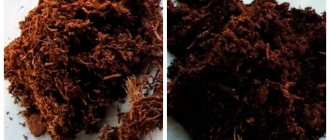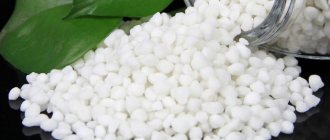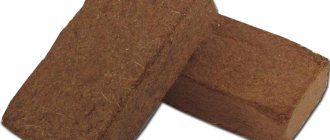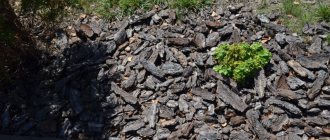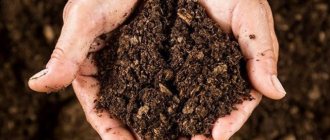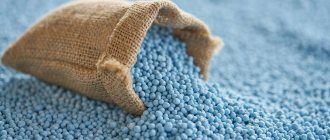We know how important fertilizers are for strawberries. When a plant is provided with all the necessary substances, it gets sick less often and bears fruit better. And the berries from the “well-fed” bushes are just right: sweet, strong, juicy. However, not all fertilizers are equally useful: the composition, dosage, and time of application are important.
Today we’ll talk about the main macro- and microelements needed by strawberries. Let's find out what the lack or excess of a particular substance in the soil leads to. And let’s try to figure out what fertilizers should be used, when and in what quantities.
Composition of the drug calcium (calcined) nitrate and properties
The composition of calcium nitrate is as follows:
Ca - 19% of the total composition and 13% N. And the formula of calcium nitrate shows what substances are included in its composition - Ca (NO3)2.
Another name for the drug Calcium nitrate is calcium nitrate.
Since it does not contain too much nitrogen, it acidifies the soil much less than urea or other nitrogen fertilizers.
Therefore, it is better to apply this fertilizer to garden and vegetable crops grown on sod-podzolic soils. However, the fertilizer will be no less effective on any other type of soil, and when it is added to the soil, its acidity remains unchanged, which is very important.
Although this type of fertilizing is classified as nitrates, if the timing of application and dosage of fertilizer is observed, it does not accumulate in the fruits
, does not harm the human body and helps increase the yield of garden and vegetable crops, and also improves the taste and other qualities of the fruit.
However, many summer residents forget to apply this fertilizer when growing vegetables and other cultivated plants and believe that the crops they grow do not really need calcium.
Reference!
It must be remembered that a sufficient amount of calcium in the soil helps cultivated plants to better absorb nitrogen, which is necessary for crops for the active growth of green mass and shoots.
It is also recommended to apply this fertilizer to soils with a high acidity level - calcium nitrate is capable of absorbing Mn and Fe from the soil, which are found in excess in acidic soils.
For which crops can calcium nitrate be used and the timing of fertilizing?
If there is not enough calcium in the soil, then the root system of plants begins to suffer first.
. It does not receive enough nutrition, the balance of nutrients in the plant is disrupted, the roots can no longer absorb the incoming water and begin to rot. As a result, the entire plant withers, rots and dies. To prevent this from happening, it is imperative to apply calcium fertilizer to the soil in a timely manner.
According to the instructions for calcium nitrate, this fertilizer should be applied to the soil in the spring.
so that all the ingredients from its composition have time to decompose in the soil and be absorbed by the root system of cultivated plants. The product is distributed over the surface of the soil and then covered with digging.
Important!
But in the fall it is better not to apply calcium nitrate - during the winter period, the nitrogen from the fertilizer will be washed out when the snow melts, and the remaining calcium without nitrogen will be useless as a fertilizer.
What helps you grow large onions?
A bed properly filled with organic matter and mineral fertilizers works for the harvest, but this does not mean that onions do not need fertilizing. At each stage of development, it requires one or another nutritional element. The main role is played by:
- nitrogen (N);
- phosphorus (P);
- potassium (K).
Nitrogen is necessary at the first stage during the active growth of feathers; with its deficiency, the growth of the aerial part slows down, the formation of heads occurs later, which affects the harvest.
During the period of bulb growth, phosphorus and potassium are in demand . The first is responsible for growth, and the second for immunity, resistance to sudden temperature fluctuations and dry soil and air.
When the potassium content in the soil is optimal, the heads are stored well.
Release form
Calcium nitrate is available in two types:
granular and crystalline. The main disadvantage of crystalline calcium nitrate is its increased hygroscopicity; if you have a choice, it is better to use this fertilizer in granular form.
Granulated calcium nitrate is more convenient to handle, does not generate dust during application, and absorbs less water from the environment.
Photo of calcium nitrate
Manufacturers most often package this fertilizer in 1 kg bags, but there are small bags of calcium nitrate with a capacity of 20 and 25 g.
When to deposit
According to the instructions for use, fertilizer containing calcium nitrate should be applied exclusively during the spring season, when the soil is being dug up. It is not recommended to use the product in the fall, as it is believed that it simply will not have any effect.
This is based on the fact that the nitrogen contained in nitrate will be washed out of the soil when the snow melts, leaving only calcium there. The latter alone will not only not benefit the plants, but can also have a detrimental effect.
Useful qualities of fertilizer
This fertilizer helps to increase plant productivity; if the dosage is not violated when applied to the soil, then calcium nitrate does not accumulate in the soil and fruits, and also does not create dangerous compounds.
In addition, the following effect from the use of fertilizer is noted:
- The immunity of garden and vegetable crops is strengthened, plants become more resistant to changes in temperature, attacks by pests and various diseases. Tomatoes and bell peppers, when fertilized with calcium nitrate, are less affected by root or blossom end rot, and cabbage or radishes are less affected by clubroot;
- foliage and root system develop faster, as a result, the process of photosynthesis in plants accelerates;
- tubers, bulbs and other seed material treated with calcium nitrate sprout faster;
- the fertilizer reduces the acidity of the soil, is capable of absorbing metals from the soil, and prevents the formation of dangerous chemical compounds. As a result, soil quality improves;
- The quality of ripened fruits also improves - the amount of sugars increases, the commercial quality becomes better, the ripening of fruits occurs faster, and the shelf life of the crop increases.
Pros and cons of calcium nitrate
The positive qualities of fertilizer include:
- the product reduces the acidity level in the soil;
- promotes the active development of positive bacteria;
- prevents the deposition of harmful salts and metals in the soil, thereby improving its structure.
However, calcium nitrate also has its disadvantages:
- When the dosage of fertilizer is increased or if it is not applied in a timely manner, negative reactions may occur - excess calcium destroys the root system and vegetative mass. As a result, the roots are unable to absorb moisture and nutrients from the soil. And excess liquid provokes the development of root rot.
How to use calcium nitrate on the site
We must remember that not all plants grown on the site are suitable for this type of fertilizer.
So, for those types of crops that grow only in acidic soils, this fertilizer is categorically not suitable:
- for marsh berries - lingonberries, blueberries and cranberries;
- coniferous crops;
- heather;
- azalea;
- ferns;
- hydrangeas
For some crops that grow on slightly acidified soils, regular application of calcium nitrate is also harmful:
- daisies;
- for decorative maple;
- acacias;
- barberry;
- honeysuckle;
- viburnum.
Application of calcium nitrate for berry crops
But there are a number of garden and vegetable crops that are responsive to the application of calcium nitrate:
- fruit and stone fruit crops;
- strawberries and wild strawberries;
- gladioli;
- clematis;
- phlox;
- dahlias;
- lilies;
- pumpkin crops;
- tomatoes, bell peppers;
- eggplant;
- cabbage;
- legumes;
- spices;
- onion;
- garlic.
Preparation of a working solution of calcium nitrate for fertilizing plants
You can feed plants with calcium nitrate in different ways: apply fertilizer when digging, dilute it and apply root or foliar feeding on the leaf.
Many novice summer residents do not know how to dilute calcium nitrate to prepare foliar feeding. To prepare the working solution, dilute 25 grams of calcium nitrate in a 10-liter bucket of water.
.
For each square of area, 200 ml of working fluid is sufficient.
Foliar feeding can be carried out if necessary throughout the summer season.
Reference!
You need to know how much calcium nitrate is in a tablespoon or a teaspoon in order to properly prepare the working solution. 1 tbsp. l. contains 15 g of calcium nitrate, and a teaspoon - 7.2 g.
You can add calcium nitrate to the soil in dry form.
, scattering granules or crystals of fertilizer in tree trunk circles, and then embed them in the soil when digging.
You can also dilute the fertilizer in liquid and water the plants with calcium nitrate at the root
. In this case, the dosage of the product should be twice as large as when preparing a solution for fertilizer on the leaf.
Important!
Before applying fertilizer at the roots, you need to water the beds with plants.
Prepared soil is the basis for a rich harvest
It’s not for nothing that experienced gardeners are already thinking about the future harvest in the fall and preparing the soil. If possible, observe crop rotation (which is not always possible, as we have already found out), returning the onions to their original place after 3-4 years. Organic matter must be added:
- rotted manure;
- compost;
- peat.
With the help of mineral additives, they replenish the phosphorus and potassium content in the soil by introducing long-acting granular fertilizers. The level of phosphorus and potassium is restored with the help of superphosphate and potassium nitrate, the application rate for digging is 30 g/m².
In the spring, work does not decrease. The ridge needs to be dug up using a spade and urea (25 g/m²) must be added. Ash can be applied during digging (ploughing) and directly into the furrows during planting. It deoxidizes the soil and serves as a supplier of potassium and other trace elements. In addition, the ash repels pests.
With prolonged use of the soil, its gradual acidification occurs. Chalk or dolomite flour 150 g/m² normalizes the pH level.
Norms for the use of calcium nitrate
The dosage of fertilizer may depend on the type of plants and their age.
Calcium nitrate for seedlings
In order for the seedlings to grow healthy and strong, it is necessary to add calcium nitrate during their growth period. The first such feeding is carried out during the period of appearance of the third true leaf, the second - 1.5 weeks after the plants dive.
Calcium nitrate for feeding flower seedlings
Fertilizer is applied strictly at the root so that its drops do not fall on the leaf blades. For a bucket of water you need to take 20 g of calcium nitrate, 10 g of urea and 100 g of ash.
Calcium nitrate for berry crops (strawberries and raspberries)
Potassium nitrate is applied to strawberries and garden strawberries once a week before flowering begins.
. You can apply similar fertilizer to raspberries before the leaves appear.
To prepare a working solution, dissolve 15 g of the product in 5 liters of water.
Consumption of working solution: 1-1.5 l per 1m2.
Calcium nitrate for fertilizing flowers
Calcium nitrate protects flowers from the appearance of various types of rot, and improves the formation of vegetative mass. This fertilizer should be applied every 1.5 weeks from the moment the buds swell.
Advice!
If the buds become smaller, then fertilizing with calcium nitrate at the root is alternated with fertilizing the flowers on the leaf.
To prepare the working solution, you need to take 1 g of crystalline calcium nitrate for every 5 liters of water.
Calcium nitrate for roses
After the spring pruning of rose bushes has been done, you can carry out the first feeding of the bush, for which you take calcium nitrate. It should be applied strictly at the root, and drops of the solution should not fall on the foliage and stems of the roses.
Traditional methods of feeding onions
Among summer residents, folk recipes are in great use ; they seem safe and have a positive effect on the harvest. For yellow feathers on onions, use pharmaceutical ammonia. The ammonia contained in it is easily absorbed and replenishes the lack of nitrogen.
A lack of nitrogen is indicated by the pale green color of the feathers and yellow tips.
Liquid fertilizer is prepared immediately before use:
- Ammonia (3 tbsp) is added to settled water (10 l).
- Simply stir the solution a couple of times and it is ready for use.
- The onion bed is watered from a watering can.
After a week, increase the concentration of ammonia to 5 tbsp. l per 10 l. Add liquid soap if the onion is grown for turnips, dry mustard (2 tbsp) if for a feather. Spray the feather with the resulting mixture in the evening. The weather during processing should be clear and dry. After a week, repeat the procedure. Three treatments with ammonia are enough.
Yeast for onions
Yeast will help if the feather in the garden looks dull and has lost its bright color. Dry and raw yeast are suitable, but the recipe is different .
raw yeast (300 g) to a barrel with an infusion of herbs, let it ferment for 3 days and start feeding the onions. For a 10 liter watering can, the mash consumption is 1 liter.
The recipe with dry yeast is prepared in the following sequence:
- pour water into a 10 liter container;
- pour 2 tbsp. l sugar;
- add a pack of dry yeast;
- Give it 2 days to ferment.
For watering, the mash is diluted with water in a ratio of 1:5.
Don't throw away stale bread
Stale bread will come in handy in the garden. It can be used to make an excellent fertilizer for onions. a vigorous sourdough recipe is ideal for root feeding onions :
- water 10 l;
- yeast (raw) 0.5 kg;
- stale bread (crackers) 0.5 kg;
- weed grass (chopped) 1 kg;
- sifted ash (wood) 0.5 kg.
Mix all the ingredients, let it ferment for 3 days and use it for watering at the root, adding 1 liter of mash to a watering can.
Any type of fertilizer, applied according to the norm and at the right time, will provide the onion with adequate nutrition and protection from bad weather, infection and pests. You need to choose those that are simpler and more convenient to use, then the turnip harvest will be enough until the start of the new sowing season.
Expiration date and storage location of the fertilizer
From the moment the fertilizer is manufactured, its shelf life is 2 years.
. At the same time, granulated calcium nitrate practically does not absorb moisture, does not cake during storage, and does not lose its positive qualities throughout the entire storage period.
But the crystalline form of calcium nitrate quickly absorbs moisture, so the opened package should be used immediately, or sealed well after use. It is necessary to store the crystalline form of calcium nitrate only in a dry room.
It is best to keep this fertilizer away from food, pet food and medications and out of the reach of children and pets.
